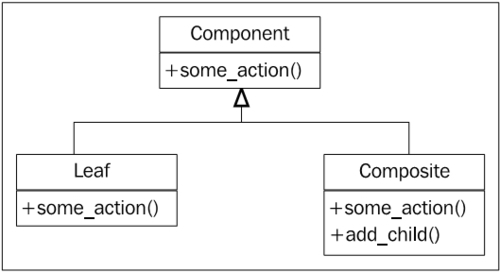Composite pattern
The composite pattern allows complex tree-like structures to be built from simple components. Composite objects are simply container objects, where the content may actually be another composite object.
Traditionally, each component in a composite object must be either a leaf node (that cannot contain other objects) or a composite node. The key is that both composite and leaf nodes can be treated identically. The UML diagram is very simple:

This simple pattern, however, allows us to create very complex arrangements of elements, all of which satisfy the interface of the component object. As an example, here is one such complicated ...
Get Python 3 Object Oriented Programming now with the O’Reilly learning platform.
O’Reilly members experience books, live events, courses curated by job role, and more from O’Reilly and nearly 200 top publishers.

